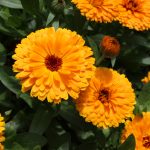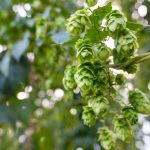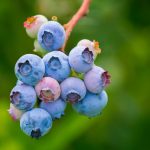
PROFITABLE AND GROWING CROPS: MANGO
Until a few years ago it seemed practically unthinkable to find mango in shops and department stores, however, nowadays it is one of the most demanded exotic fruits in the world market. Although it is commonly believed that it is a tree from the American tropics, due to the fact that these are the areas from which it is most exported, it is actually a species from Asia. Its cultivation in Spain is mainly in different areas of Andalusia and in the Canary Islands. It can be said that it is a highly profitable crop with a market that has been consolidating over time, on a par with that of other fruits, such as the avocado, about which you can find more information in our previous publication.
General characteristics
Within the genus Mangifera, only 3 or 4 species produce edible fruits, among which is the mango (Mangifera indica L.), a tree species belonging to the family of cashew trees, that is, belonging to the same family as other crops of great importance, such as the pistachio, also recognised as one of the most profitable crops for 2020. All the species that make up this family have resin canals, both in the trunk and in the branches. The exuded resin can be used in the manufacture of rubber and insulation, among other things.
It can grow up to 30 m high in the wild, although on cultivated farms its height is limited in order to facilitate tasks such as harvesting, pest and disease control methods and pruning. Regardless of the variety, a distinction can be made between trees propagated from seed (sexually) and those propagated by grafting (asexually). The former have an erect trunk and are much taller (25-30 m), although it is not until the sixth year that they reach a minimum production point. In the second case, the trees are much smaller (5-10 m) with little branching, although they begin to produce from the third year onwards. The crown, as a general rule, tends to reach a rounded and symmetrical shape. The growth of the branches takes place in periods or cycles known as vegetative flows. The vegetative shoots change colour over time, from violet and coppery tones, due to the absence of chlorophyll (no photosynthetic activity) to light and pale green, and finally reaching a dark green tone.
The root system is vigorous, as well as very efficient, with vertical and horizontal developments of up to 10 m in length, a key element to take into account in the design of fertilisation plans. Its development is limited by environmental conditions.
Fruit production in this species is alternate, so that after one or several cycles of optimum production, the most common is a year in which harvest levels drop radically. Thinning or fruit removal does not influence this condition. The causes are not yet clearly defined, although it is established that it is due to the fact that in years of low production, the tree takes advantage of the situation to invest most of the nutrients in vegetative growth, also increasing the levels of reserves, which can ensure flowering and subsequent fruit formation.
Environmental conditions
The average temperature range is between 24 and 27 °C, with minimum temperatures between 11 and 17 °C and maximum temperatures not much higher than 34 °C. Specifically, mango thrives in climates with slightly cold winters, slightly warm springs and warm summers and autumns. It is necessary that there are no large temperature variations between day and night. They are also not very tolerant of frost. However, a well-developed tree can withstand temperatures as low as -2 °C, as long as this does not last for a long period of time.
The natural distribution area is characterised by an annual rainfall between 1500 and 2600 mm, with a dry season lasting up to 5 months. This means that in climates where this is the case there is no need for irrigation, unlike in areas with lower temperatures where there is only a warm season, where irrigation should be more copious, as vegetative development occurs simultaneously with fruiting. It still adapts very well to drought conditions, once it is well rooted. Water stress is the main trigger for flower induction in tropical areas. In short, a good annual rainfall distribution is preferable to a large amount of rainfall, as long as the minimum annual rainfall is 700 mm.
It thrives best in deep soils, i.e. not less than 80 cm deep, with good drainage to avoid waterlogging. The drainage capacity of a soil is related to its structure and organic matter content, which ensures porosity or the right proportions of oxygen and water. If you want to know more about the importance of maintaining a good soil structure, have a look at this publication. Light soils that allow roots to enter, attach and grow are recommended, with a silty-sandy or sandy-clay texture. The pH should be between 5.5 and 5.7, with a tolerance range from 4.5 to 7.5.
Management
Contrary to what happened with other crops, previously described, such as pistachio and almond trees, in the case of mango it is practically impossible to resort to the implementation of a dry or deficit irrigation system, except in those areas where rainfall levels can ensure the maintenance of humidity at the key moments required by the plant for optimum growth, also associated with a climate with temperatures within the ideal range for this species. This means that it will be necessary to implement irrigation systems throughout the whole of Spain, since the areas with higher temperatures that can meet this requirement have low rainfall levels, i.e. they will not be able to meet the water needs of the trees. Given that it is essential to avoid continuous waterlogging of the soil to prevent the roots from suffocating, as well as an increase in the incidence of certain pathologies, the most recommended irrigation systems are drip irrigation or micro-sprinkling, which allow water to be saved, as it is used more efficiently. They also reduce the appearance of adventitious species in the streets between trees, as it is a localised irrigation system.
Once the model to be implemented (irrigation) has been decided, the planting frame must be designed, a decisive point, as it will have a great influence on the correct development of the trees. For large varieties, the distance between trees should be 3 x 5 m, while for small varieties, this distance can be reduced to a planting frame of 2.5 x 3 m. These distances can be reduced, as long as they are not too wide. These spacings may be reduced, provided that the development of the tree is not compromised at any time by competing with another tree for resources.
Pruning
Pruning is carried out with two main objectives, which are the maintenance of a harmonious and well-balanced development of the canopy, ensuring a uniform incidence of sunlight on all parts; and the guarantee of a balance between production levels and the correct development of the rest of the tree, as well as in relation to the quality of the fruit. In this crop, five types of pruning can be classified: training pruning, opening pruning, production pruning, balancing pruning and rejuvenation pruning. Formative pruning is that which is carried out in the early stages of growth, determining the desired shape of the tree, i.e. it helps to define the final structure of the tree. It is related to central opening pruning, the purpose of which is to increase light and aeration inside the canopy. Production pruning aims to improve, as its name suggests, production levels by eliminating old, damaged or insufficiently productive branches and replacing them with younger ones. Balance pruning is pruning aimed at establishing a balance between vegetative development and fruit production. Finally, rejuvenation pruning is pruning in which most of the tree is cut back, either because most of the structures are affected by some pathology or because of ageing. It is not advisable to carry it out in a drastic manner, as this could cause stress to the tree.
Pests and diseases
Fruit fly (Ceratitis capitata): a diptera widely distributed throughout the continents, and one of the most damaging to the economics of fruit orchards. During winter, the fruit fly is found buried in the soil as pupae or larvae, as long as it is able to obtain hosts that fruit in winter. In mild climates, when winter begins to end, the first generations of adults appear. After the reproduction process, the females bite into the rind of the fruit and lay their eggs inside. The larvae extract their food from the pulp of the fruit, where they make galleries. As a result, the fruit begins to rot and eventually falls to the ground. Once this happens, the larvae emerge, burrowing into the soil, and pupate in a reddish-brown puparium. This pupa is laid a few centimetres deep. When they leave the fruit, rotting occurs as a result of fungi entering through the holes made by the females during laying. Decomposition of the pulp is what triggers the fruit to fall.
Mango or snowy nutsedge mealybug (Aulacaspis tubercularis): hemiptera, which owes its name to the whitish colouring of the male colonies. From this it can be deduced that there is a marked sexual dimorphism, so that the male’s shield is much more elongated and has indentations, arranged longitudinally, white and parallel to the body. The female, on the other hand, is circular in shape and has a flat, whitish shield that covers the entire body. Moreover, the females are not grouped together, but are scattered over the leaves and fruit. They are mainly concentrated on older leaves, especially those located in shadier parts of the tree. Yellowing of the leaves occurs, in which the affected areas die, and the leaves may even fall off prematurely if the attack is very intense. On the fruit it causes discoloration of the attacked areas, which leads to alterations in the ripening process, as well as to a depreciation of its commercial value.
Lemon moth (Prays citri): a species of lepidopteran, the adult of which is grey with dark spots on the wings, bordered with long fringes. The larvae are whitish or greenish with a brown head. The adults fly at night and at dusk, when they lay their eggs on the petals of flowers that are still closed, as well as on sepals, buds or small fruits. It is estimated that they can have up to 5 generations in a year. Isolated eggs can be seen on the petals, in the shape of a whitish speck. The caterpillar hatching from the egg penetrates directly into the flower, piercing the chorion, feeding on nectar and other sugary substances. It is common for affected flowers to be close to each other, as the caterpillar connects them by means of silk threads. The larvae may also feed on leaves, forming galleries.
Molasses honeylocust (Cryptoblabes gnidiella): polyphagous lepidopteran with 3 to 5 generations per year, depending on the conditions of the environment and the host plant, and even more. The adult has a dark greyish body and wings, while the caterpillars are variable in colour, ranging from green to brown, with a brownish head and pronotum. The egg is whitish in colour. The caterpillars take refuge in the calyx and flower caps of the stylar zone of the fruit, where they cause the most serious damage by feeding on the epidermis, producing irregular lesions of variable depth. This causes commercial depreciation, also inducing an advance in the ripening process, which may be associated with an attack of the fruit fly, previously described. The attacked fruits may change colour and fall to the ground prematurely. It may also attack the flowers of the crop, devouring petals and stamens. It is nocturnal and crepuscular. During the winter it is found in the larval stage under the bark of tree branches. Although females only mate once, males may mate several times.
Apical or bacterial necrosis (Pseudomonas syringae): gram-negative bacterium in the form of a bacillus, with polar flagella. It is a species capable of causing damage to a wide variety of plants. Infection occurs when the pathogen is transported from one place to another through the air or by splashing water. Solar radiation and high temperatures have a very negative effect, causing it to practically disappear during the summer from the leaves, although it can take refuge inside the buds, triggering a new infection when conditions are optimal. One of the most important characteristics to bear in mind is that it has ice nucleating activity, i.e. it serves as a nucleus for the formation of ice crystals at higher temperatures (-2 ºC). The most characteristic symptoms appear as necrotic spots, which are located on vegetative and floral buds, and may extend to other areas of the stem and leaves, along the midrib. Flower panicles may also be affected. Droplets of whitish exudate may be observed on the buds or panicle, which may darken over time and take on a resin-like appearance. There is no damage to the fruit. In some cases, the entire branch may die, or even the whole tree, if the attack is very extreme.
Anthracnose (Colletotrichum gloesporioides P.): pathogenic fungus, cosmopolitan distribution with predominance in the tropics and subtropics. For infection to occur, relative humidity must not be below 95%, as from that point onwards its growth is inhibited. It affects fruit, leaves, shoots and flowers. In fruits it can even cause them to fall, forming dark spots of irregular appearance on their surface, which can come together to form a single spot covering the whole of the fruit. Latent infections may occur on ripe fruits, which appear during storage. Oval-shaped or irregular brownish spots appear on the leaves, located at the apex, edge or centre. With the passage of time, these may increase in size, giving rise to elongated necrotic areas. In the case of branches, necrotic areas begin to appear at the apex of young shoots, which eventually dry out. The youngest trees may dry out completely. Finally, on the flowers, it is manifested by dark spots that become larger and larger, which may eventually lead to drying and falling off.
Cercospora mangifera (Cercospora mangifera): pathogenic fungus, whose presence is favoured by high temperatures and high relative humidity, which encourage sporulation. The fungus spores are spread by wind or water splashes from irrigation or rain. Workers’ clothing and tools also encourage the spread. The first symptom is a yellowish discolouration on the back surface of the leaf, which spreads to form a dark lesion surrounded by a yellow halo. If the pathology is very severe, the lesions join together until they cause the total collapse of the leaf tissues. The areas where these lesions appear completely lose the ability to carry out photosynthetic activity.
Scab (Elsinoe mangiferae B.): fungus, which causes damage to leaves, stems (branches) and fruits. Symptoms are characterised by raised, oval to elliptical, dark-coloured spots surrounded by a halo. The leaf margin is also distorted. Perforations may appear on the leaves when the damage is very advanced. In addition, a series of elongated, dark lesions appear along the midrib. Small lesions or grey scabs may be seen on the branches. Finally, on the fruit, grey lesions or scabs also develop on the peel, which result in deformation, forming cracks that cause rotting. The surface of the fruit has a corky layer.
Mango powdery mildew (Oidium mangiferae B.): pathogenic fungus, which triggers a very common pathology in different plant species, affecting fruits, flowers, tender shoots of inflorescences and stems. Its presence is observed due to the presence of a white mycelial tissue. The affected surface is completely covered with a powder, consisting of millions of spores, which is then spread by the wind. As a result of this reproductive capacity, it is possible that with just a few affected flowers, epidemic dissemination can occur, affecting the whole farm, provided the most favourable conditions, including high temperature and high humidity, are met. If these factors do not occur, the conidia of the fungus die quickly due to dehydration. The food source is the flowers, which eventually fall off, and the youngest fruits. When attacked at an early age, the fruits do not develop properly and eventually fall off as well. Sometimes attacks can be so severe that the crop is reduced to nothing.
Neck rot (Phytophthora spp.): genus that includes different species, all of them oomycetes, that produce a wilt, which can remain in the soil for several years, in the absence of a host, especially in the most superficial layers, in organic substrates such as plant remains and humus. The most favourable factors for its development are high temperatures and an excess of water. In winter, it is found on infected roots, tubers and bulbs or in the soil, in various forms. It is transmitted by wind and rain, which causes it to fall to the ground, where it spreads, which is why it is most prevalent in irrigated areas. It penetrates the host from unprotected surface wounds or natural openings. Symptoms are concentrated on the collar and main roots, which gradually rot and the bark becomes dehydrated, taking on a dark colour. The disease progresses relatively easily and trees suffering from it show generalised weakening, leaf fall, wilting, poor fruit size and ripening, collapse and even death. All these symptoms depend on the severity and level of affectation.
Witches’ Broom (Fusarium decemcellulare): this is a pathogenic fungus, which causes a disease of great economic importance, whose incidence is greater during the months of higher rainfall, when the pathology becomes more evident. It is produced in small colonies on dead stems and branches and its dispersal is favoured by the action of different species of insects, air and water. Symptoms are mainly seen on new shoots, where there is a marked reduction in internode length and leaf area. As the shoots are unable to expand, they generate a series of deformities, giving a broom-like appearance, which gives this pathology its name. It is also manifested by the proliferation of branches, short internodes, short, scaly and abnormal leaves, related to a loss of apical dominance. Nursery plants are generally more vulnerable to this vegetative malformation than more developed trees. A floral malformation may also occur. During the winter the galls become necrotic and disintegrate. Also, in periods of drought the disease progresses much slower.
Downy dieback (Botryodiplodia theobromae): also known as stalk rot, it is one of the most relevant pathologies at post-harvest level, specifically during prolonged storage, causing a total loss of fruit due to rotting. The fungus resists in the plantation by colonising dead branches and leaves, forming pycnidia, from which the conidia are released and disseminated, contaminating the fruit when conditions are optimal. It is established that it is a latent pathogen, which can be found as an endophyte in healthy plant tissues, becoming as such a pathogen when the host is weakened or stressed. It occurs most intensely when relative humidity is above 80% and temperatures are between 26 and 32 ºC. The most characteristic symptoms are the progressive downward drying of the different parts of the tree, with the appearance of black spots on the bark. Dark grey lesions can be observed on the leaves, the progression of which results in defoliation, which can even lead to the death of the tree.






